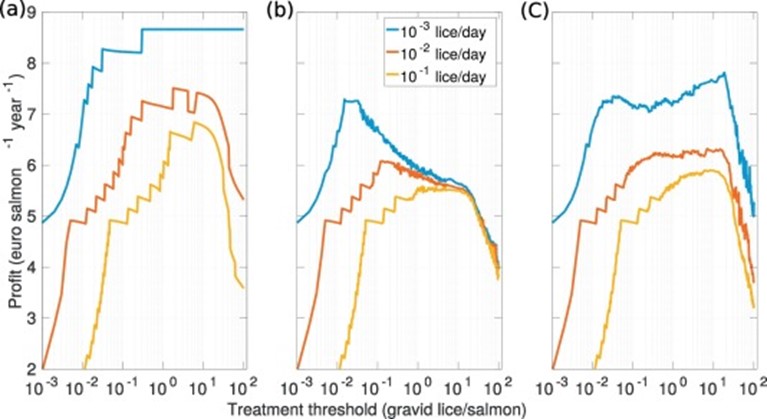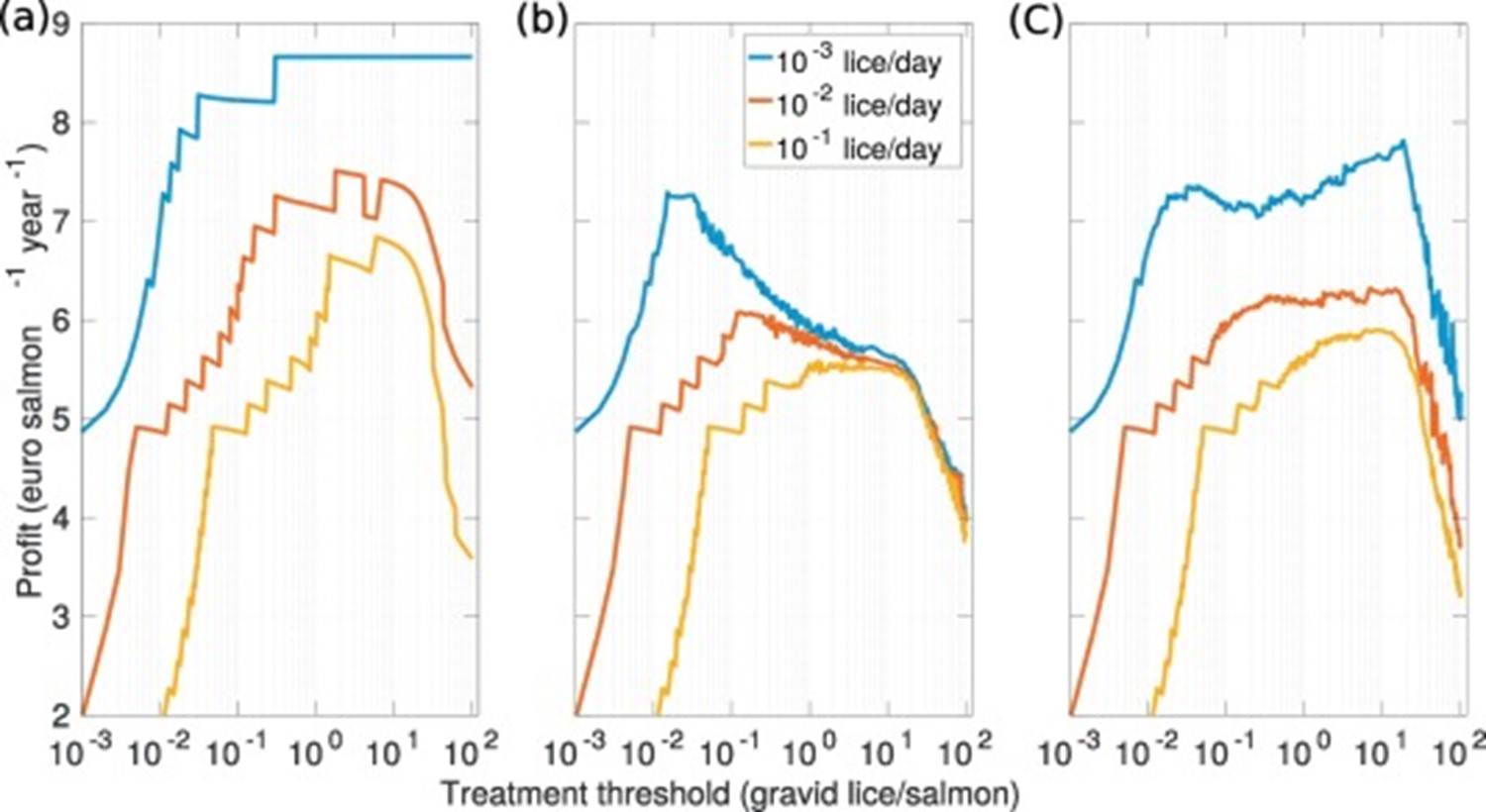Research: Salmon lice has for decades plagued salmon aquaculture by decreasing profits and impacting wild salmon stocks. Now, researcher at P/F Fiskaaling Mr. Tróndur Kragesteen has published a scientific paper in the Aquaculture journal that contributes to understanding the mechanics behind the salmon lice issue.
To protect migrating wild salmon stocks and avoid excessive cross-farm infections, authorities require treatments when sea lice level reach a given threshold. The treatment threshold is set to protect wild salmonid stocks but also to avoid costly lice infections on neighboring farms.
“Here we make a bioeconomic estimation of optimal treatment thresholds. We are particularly interested in identifying conflicts between the optimal threshold of the entire system of farms and for the individual farmer,“ says Mr. Tróndur Kragesteen.
Isolated individual farms are seen to be maximizing profits by operating with a high threshold, while the maximum profit for an entire network of farms occurs with a threshold about 0.1 gravid female lice/salmon. These findings substantiate the Norwegian policy of lowering the lice treatment threshold below 0.5 gravid lice/salmon.
The results also demonstrate that too low a treatment threshold results in high treatment rates. The difference between the optimal treatment strategy of individual farmers and that for the total system demonstrates that management of salmon lice infections operates in a tragedy-of-the-commons environment, where individual farmers may have an incentive to disregard legislation at the expense of the others in the network.
The paper argues that strong enforcement is needed to achieve optimal management of salmon lice infections.
Free access to the paper from this link.
In addition to Mr. Tróndur Kragesteen, the co-authoring researchers are: Knud Simonsen, André W. Visser and Ken H. Andersen.


